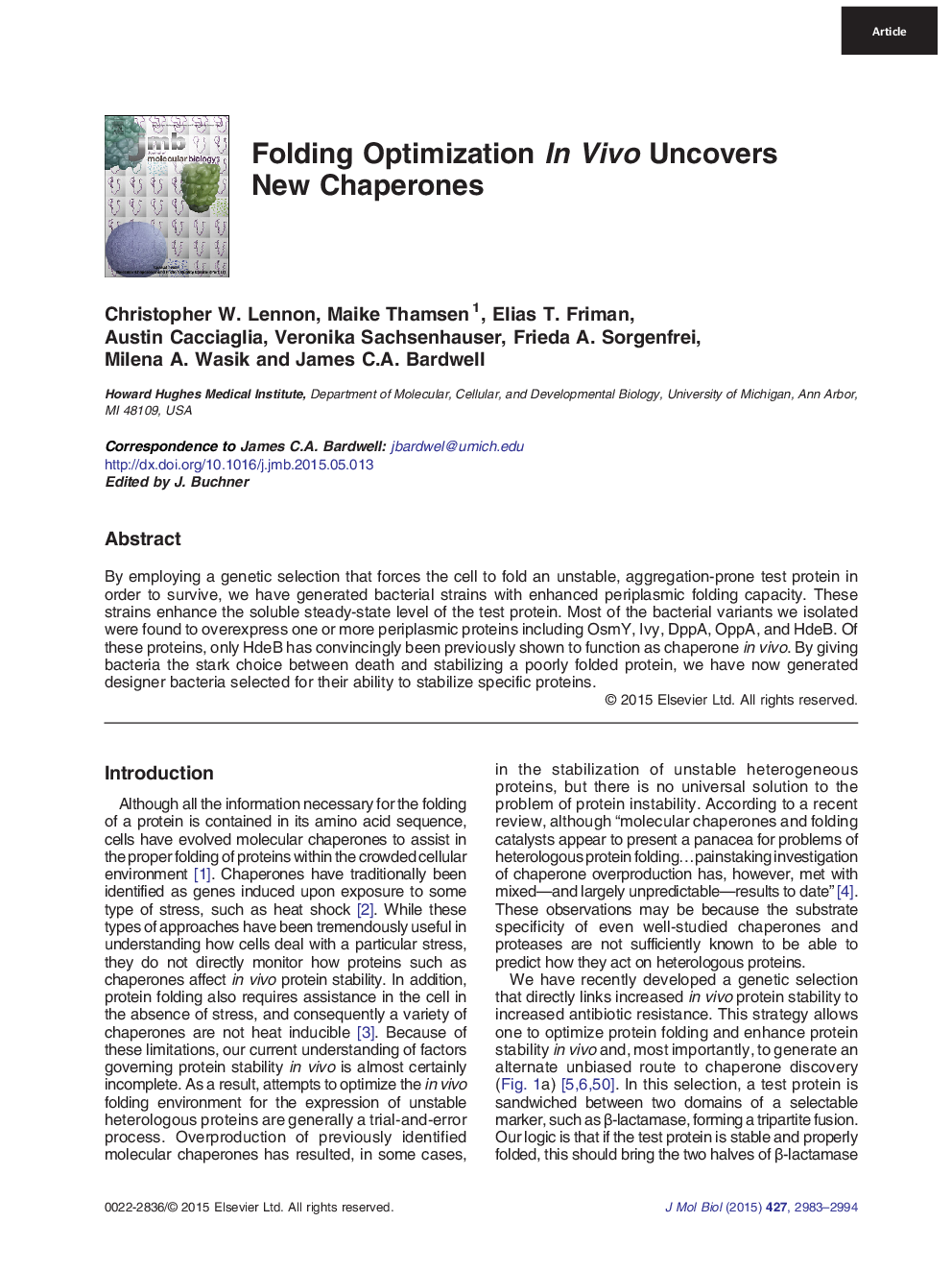| Article ID | Journal | Published Year | Pages | File Type |
|---|---|---|---|---|
| 2184497 | Journal of Molecular Biology | 2015 | 12 Pages |
•Chaperones are usually identified through their upregulation in response to stress.•Using a “fold or die” genetic selection, we have generated folding-enhanced bacterial strains.•Folding-enhanced strains overproduce OsmY, Ivy, DppA, OppA, and HdeB.•OsmY, Ivy, DppA, OppA, and HdeB function as chaperones.•Chaperones can thus be identified by selecting for improved protein stability.
By employing a genetic selection that forces the cell to fold an unstable, aggregation-prone test protein in order to survive, we have generated bacterial strains with enhanced periplasmic folding capacity. These strains enhance the soluble steady-state level of the test protein. Most of the bacterial variants we isolated were found to overexpress one or more periplasmic proteins including OsmY, Ivy, DppA, OppA, and HdeB. Of these proteins, only HdeB has convincingly been previously shown to function as chaperone in vivo. By giving bacteria the stark choice between death and stabilizing a poorly folded protein, we have now generated designer bacteria selected for their ability to stabilize specific proteins.
Graphical abstractFigure optionsDownload full-size imageDownload high-quality image (147 K)Download as PowerPoint slide
